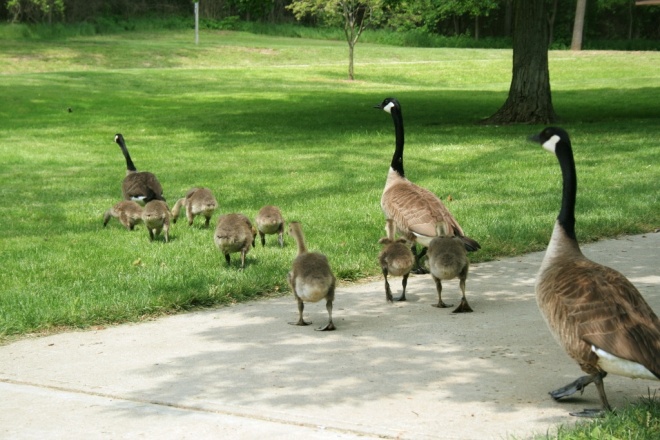Animal policy lessons from Flight 1549

A gaggle of Canada geese crosses a path in Cincinnati’s Sharon Woods. Photo courtesy: Konstantin Vasserman.
A year ago today, the celebrated level heads of US Air Flight 1549’s captain and crew brought Americans together around a rare and villain-free moment of heroism. The plane had flown from New York’s La Guardia Airport into a flock of geese, lost the use of both engines, and landed safely on the Hudson River, saving 155 lives.
But the near-disaster shook the waters of animal policy-makers. Representatives of ecology, animal protection, and hunting interests, long at odds over how human cities should treat geese, lobbed opposing arguments through the media for months.
Today, the accident’s lingering fallout reveals the vastly different ways of seeing geese that underlie those arguments, and make it hard for people to find common ground around wild animals.
An old problem
After the accident, New York City officials were quick to declare their commitment to preventing future goose airstrikes.
“Lives are at stake here,” said Queens City Councilman David Weprin. “We cannot afford to wait until another accident occurs.”
But the city faced the task of somehow cracking down on a problem they had already been battling for years: large birds sharing New York City’s airways. Despite the use of techniques both lethal (shooting and gassing), and non-lethal (harassment and abortive “egg-addling”) to keep geese away from airports, the number of wildlife airstrikes increased from 1,759 in 1990 to 7,666 in 2007.

